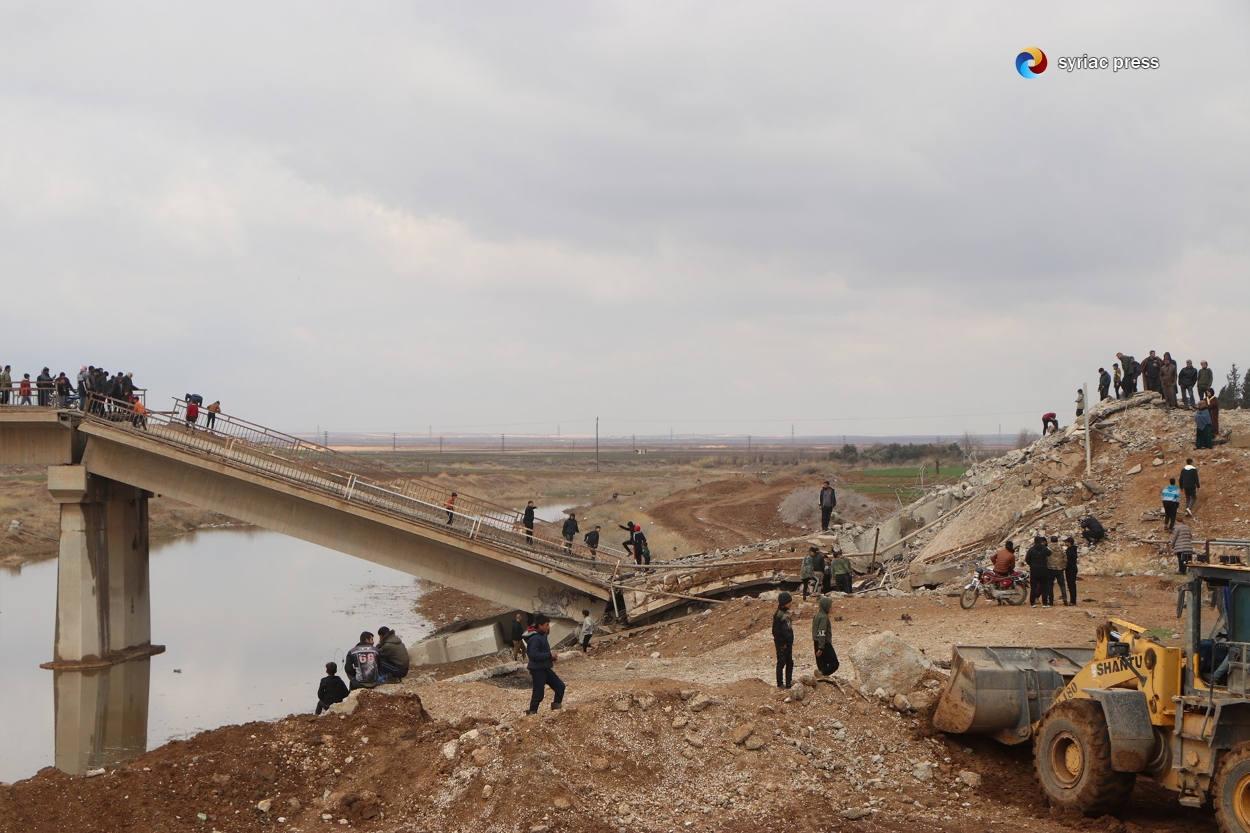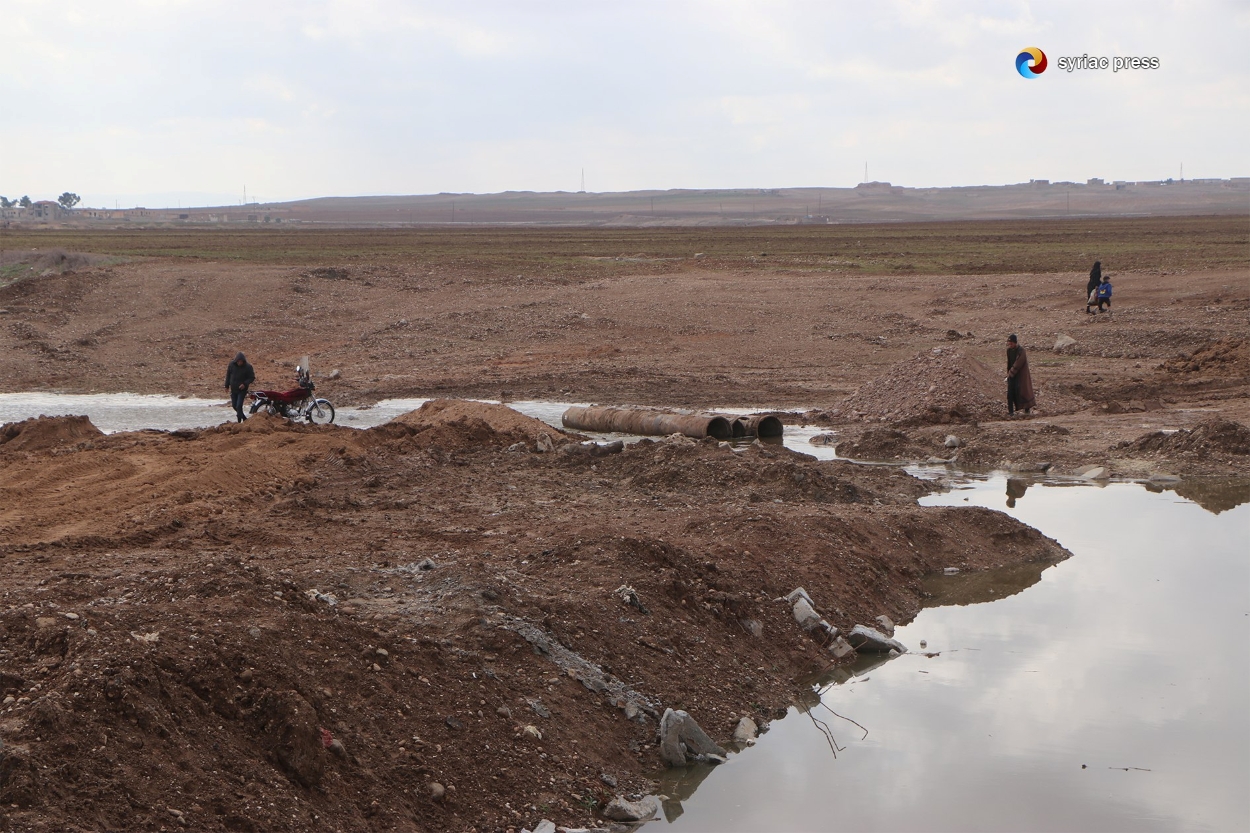Collapsed Lifeline: How the collapse of the Tel Tamr Bridge is isolating villages and burdening residents
TEL TAMR, North and East Syria — For decades, the Tel Tamr Bridge spanned the Khabur River, connecting villages, farms, and marketplaces across this region of North and East Syria. Built nearly 90 years ago during the French Mandate, it was more than just a passageway — it was a lifeline.
Now, after heavy rains and flash floods battered the structure, the bridge has collapsed, leaving little more than rubble. Its loss has disrupted daily life for thousands of residents, who now face long and costly detours of 40 to 50 kilometers just to reach the other side.
Key Trade Route Severed
For many in the region, the Tel Tamr Bridge was not merely a local thoroughfare but a critical artery for commerce. It connected vast areas of Syria, stretching from the Iraqi border in the east to the Syrian coast and Turkey in the north.
“This was one of the most important bridges in Syria,” said Odesho Yukhna, a 40-year-old resident of Tel Shamra. “It sat on the M4 highway, linking Iraq to eastern Syria, and from there to Holeb [Aleppo], Daramsuq [Damascus], and the coast — eventually reaching Turkey.”
The collapse has upended daily routines. What was once a five-minute drive from Tel Shamra to Tel Tamer now takes over an hour. “I have to travel all the way to the Kharita Bridge and take a long detour back,” Yukhna said.
Daily Journey Turned Ordeal
For Tel Tamr’s residents, the bridge’s collapse is more than a mere inconvenience — it is an economic and logistical crisis.
“So many people, especially the elderly Assyrians who come into town, are struggling,” said Suhail Nouri Shabo, a local resident. “They have to stop at the collapse, unload their goods, walk long distances, and then find another vehicle to take them the rest of the way.”
Farmers, who depend on the bridge to reach their fields, are among the hardest hit. “The bridge connected the western and eastern villages, as well as the north and south,” said Mowafaq Youssef, a farmer in Tel Tamr. “Now, if I need to get to my land on the southern side, I have to take a grueling route through Kharita. This is not just about travel — it’s an economic disaster. Longer distances mean higher fuel costs and increased transport expenses.”
More Than Just a Storm
The bridge’s collapse was not solely caused by the recent storms. Years of conflict had already left it vulnerable.
“This bridge was a major economic and service corridor,” said Sarkon Salio, an Assyrian parliamentary representative from Tel Nasri. “It sits on the M4 highway, linking Hasakah to Holeb, making it one of Syria’s most crucial routes. Its collapse has severely disrupted travel between the eastern, western, northern, and southern regions.”
The bridge had already sustained significant damage during the Islamic State’s (ISIS) attack on Tel Tamr and the villages of the Khabur River Valley on 23 February 2015. Parts of it were destroyed during the fighting, and ISIS left mines embedded in the structure. “That weakened it over time. When a lightning strike hit recently, it likely triggered an explosion of the remaining mines, causing the final collapse,” Salio said.
Temporary Fixes, Persistent Fears
With public frustration mounting, the Tel Tamr Municipal Council has scrambled to implement emergency measures.
“We are fully aware of the severity of this crisis,” said Mustafa, a municipal official. “We have put in place temporary water channels as an emergency measure to ensure the villages aren’t completely cut off. But this is not a permanent solution. If Turkey releases more water from its side of the border, these channels will be wiped out immediately, and we’ll be back to square one.”
Call for Swift Action
Residents fear that delays in rebuilding the bridge will exacerbate the economic and humanitarian toll. With rising fuel prices and increased transport costs, the burden on traders, farmers, and students is growing daily.
“We need a long-term solution, not just band-aid fixes,” Youssef said. “If this situation continues, everyone will suffer. The local economy is already fragile — we can’t afford more setbacks.”
Region with a Distinct Identity
Tel Tamr lies at the heart of Syria’s Assyrian homeland. Along the Khabur River, 33 Assyrian villages dot the landscape, forming a community that has endured despite decades of war and displacement.
Historically, these villages thrived on farming and trade, with the Tel Tamr Bridge serving as a vital link to larger urban centers. Now, as the community grapples with the impact of the bridge’s collapse, many fear that, without swift action, the region’s already dwindling population will face yet another threat to its survival.

























